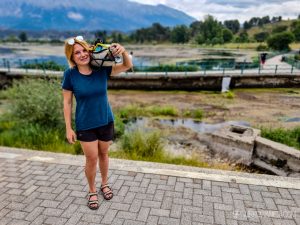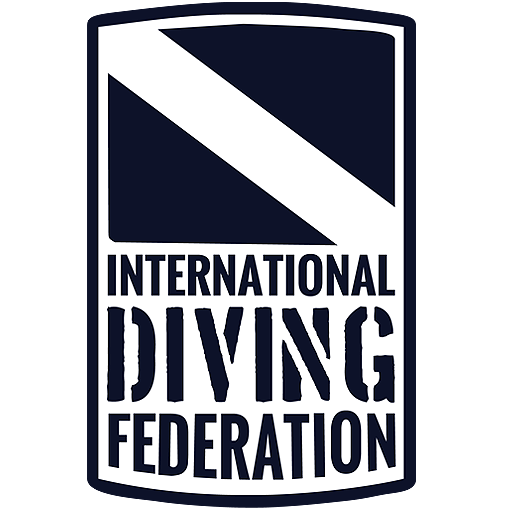Annual cave expeditions to the Balkans have already become a tradition of our Calypso Diving Club. Every June we carefully plan the route, choosing the countries and caves we intend to visit. Although there are times when the weather plays tricks on us, and the conditions at some dive sites are not easy to predict, there are still quite a few of them, and they are varied enough to provide a cave diver of any level with interesting and challenging moments.
This year, proper planning was especially important, as we both had plans to conduct very advanced training. Sebastian had a particularly demanding task ahead of him – to conduct Full Trimix dives and an Expedition Cave courses, while I was able to focus on the Full Cave course. The Balkans are ideal for such tasks, as you can choose a great variety of caves. Spacious wells and huge depths? Shallow and branching passages? Strong currents? Difficult access requiring the use of rope access techniques? We can find it all here!
And since all these attractions were within easy reach, we decided to take advantage of them. Since we are at deep dives, in cave conditions just planning decompression and gases is not the only challenge we had to face. First of all – breathing mixtures are prepared here by ourselves, as there is no dive base in the area that would do it for us. In addition, the caves rarely lie along the road itself, and even more rarely there is a convenient path leading to them. This means that all the necessary equipment has to be transported first – in difficult conditions, in the heat and sometimes in the rain. Diving on hypoxic mixtures requires taking not only decompression gas, but also travel gas, which allows you to get from the surface to a depth where back gas can be safely used.
At such times, nothing is more important than a team. Transporting equipment together reduces the physical burden on individual divers and speeds up the whole process. So we get to the point where we’ve been carrying cylinders continuously for half an hour, and they’re not missing at all!
I think you can venture to say that the heart of cave diving is the ropes. Of course, most often this statement refers to the handrail, which is an uninterrupted connection between the diver and the surface at all times.
On a Full Cave course, one of the most important issues is precisely the ability to navigate advanced. This means that in addition to the ability to navigate a fixed handrail, it also includes setting up your own handrails in caves where there are none. Many fixed handrails begin already underwater, which means that the diver should start the dive by establishing its connection to the surface. Further, already in the course of the dive, there may be an opportunity to enter a side passage, thus changing the handrail to another. All this requires the diver to use his own spools or reels to keep the handrail running (the most important safety rule in cave diving).
However, ropes are not everything – for such junctions, reflections, and their own “paths” require proper marking that will enable the team to safely return to the exit, even in the event of total loss of visibility, and also not mislead other dive teams that are underwater. We start by practicing on the surface, untangling complex connections from reels and spools like the webs of a giant spider web, and dryly, in safe conditions, discussing any issues that arise during the course. From moving around breaks within a single handrail (made to reduce the number of crossings or to limit tourist traffic in selected parts of the cave), to changing from one main handrail to another, to more complicated routes such as loops or traverses. We practice them first on the surface, so that later we can transfer the acquired skills underwater.
On the Expedition Cave course, handrails are no longer the only ropes that divers must master the use of. Some caves are located in areas that are difficult to access. Sometimes it is possible to walk to them due to the terrain, other times transporting equipment would be quite risky. At such times, rope access techniques should be used. It starts with the construction of a safe descent position that a diver can use to descend into the cave, and later ascend using the appropriate equipment. There was a lot of excitement 🙂
The irresistible charm of the Balkans is not only the magnificent wild caves, but also the whole environment that accompanies our trips. Picturesque landscapes – rocky mountains and massive, forest-covered gorges, clear rivers, but also historic, charming cities and towns. One of the stops is Mostar with its stone bridge spanning high above the river, narrow streets and pubs with fantastic local food and wine made from endemic grape varieties such as Zilavka. Specialties of Bosnian and Herzegovinian cuisine include a variety of grilled meats, great cevapi served on warm bread and with slices of sweet, crispy onions, pljeskavice, but also stuffed grape leaves and vegetables, and delicious salads made from fresh vegetables. I can’t imagine a day so hard that I didn’t have the strength later in the evening to go out for such a good dinner, drink a glass of wine and light a hookah on comfortable cushions stretched under flowering trees.
Our next stop was also Serbia – with its caves hiding in plain sight next to restaurant tables, the vivid greenery of the trees overgrowing the gorges and the extraordinary hospitality of the people living in the area. As I mentioned – the weather can surprise – and here heavy rainfall, high, even flood water levels caused rivers to flow out of the caves instead of streams, small watercourses turned into waterfalls, and the current effectively knocked out the idea of going into the water. But that’s okay – we respect the unpredictable nature and wildness of our Balkan caves.
We, for sure, will return here.
About author:

Daria Dobrowolska has been involved with the IDF since the very beginning of the federation. She is a Staff Instructor of recreational diving as well as technical diving at the trimix and advanced wreck level, but she is most proud of her Full Cave instructor certification. In diving, she appreciates intimate cave trips and fascinating macro tropical seas. You may know her as the author of our training manuals.
Outside of diving, she enjoys spending her free time in the mountains and traveling, always with a book in her backpack.

















